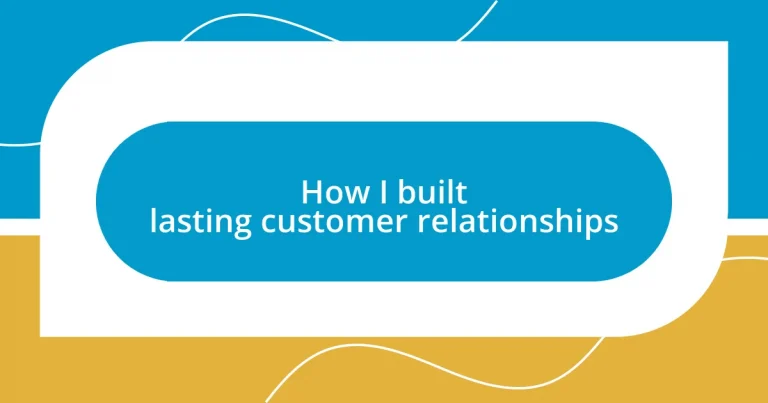Key takeaways:
- Understanding customer needs requires active listening and empathy, fostering emotional connections through genuine communication and follow-ups.
- Building trust involves transparency, accountability, and personalized interactions, ensuring customers feel valued and prioritized.
- Nurturing long-term relationships can be achieved by celebrating milestones, facilitating community dialogue, and valuing customer feedback, transforming transactions into meaningful connections.
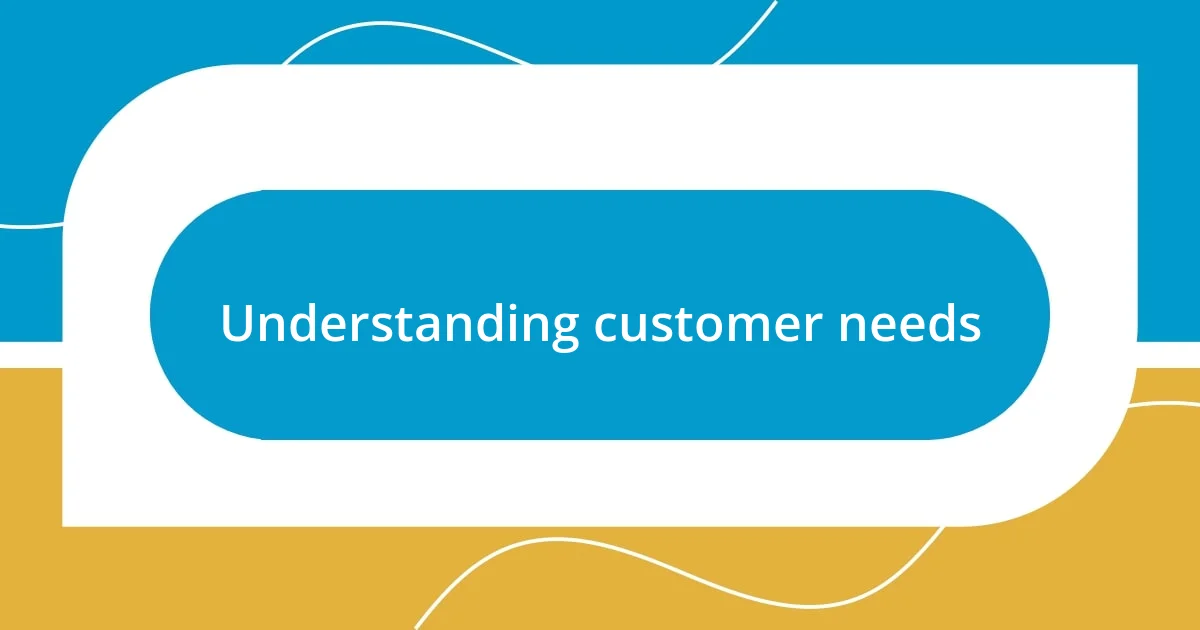
Understanding customer needs
To truly understand customer needs, I’ve found it essential to listen more than I speak. One time, I was in a meeting where a client shared their frustrations with a competitor’s service. As I paid attention and took notes, I realized that what they valued most was not fancy features, but reliable support and genuine communication. This experience cemented in my mind that empathy is the key to uncovering what customers truly seek.
Often, I reflect on my past interactions—how asking simple yet thoughtful questions led to profound insights. Have you ever noticed how a small conversation can reveal a customer’s underlying desires? One of my clients once mentioned that they felt overlooked when a business failed to follow up after a purchase. That feedback prompted me to create a follow-up plan that emphasized checking in, which dramatically improved our relationship.
Understanding customer needs goes beyond just gathering feedback; it’s about developing an emotional connection. I frequently remind myself that every piece of feedback, whether positive or negative, is a chance to deepen that bond. When a customer feels heard and understood, they are more inclined to stay loyal, and I’ve seen this play out time and again in my own experiences.
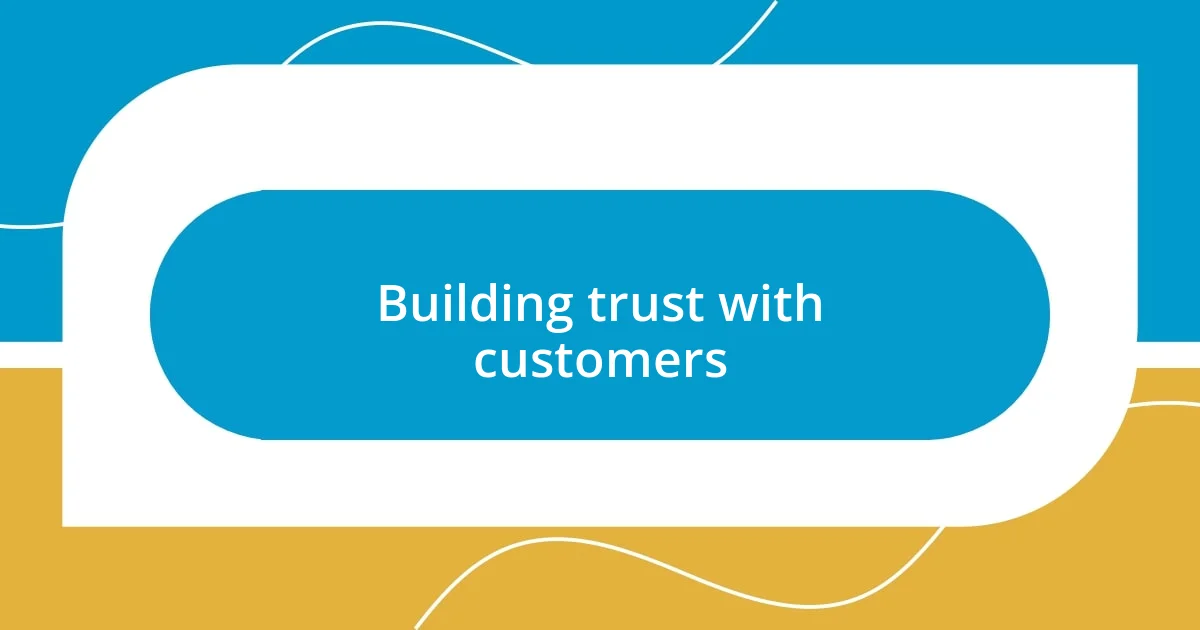
Building trust with customers
Building trust with customers is a gradual but impactful process. I vividly remember an incident where a long-term customer faced a significant issue with a product. Instead of providing a quick fix, I took the time to sit down with them, fully understanding their concerns. By doing this, I not only resolved the issue but also showed them that their satisfaction mattered to me. That moment transformed our relationship, reinforcing trust as they recognized my commitment to their experience.
To foster trust effectively, I’ve discovered a few key practices:
– Be transparent: Honesty about capabilities and timelines builds relationships.
– Consistent communication: Regular updates can create a sense of security.
– Own mistakes: Acknowledging errors shows accountability and strength.
– Provide value: Sharing relevant insights or resources can deepen trust.
– Personal touch: Remembering small details from past conversations shows care and investment.
When customers realize that you genuinely prioritize their needs, they’re more likely to trust you and remain loyal, which is worth its weight in gold.
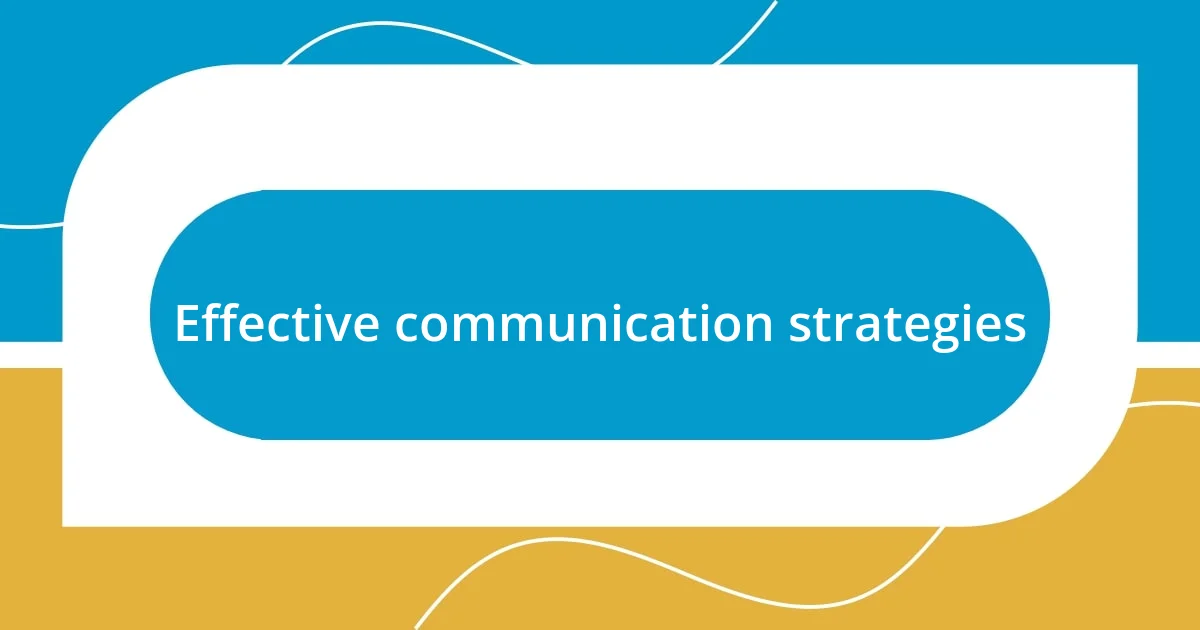
Effective communication strategies
Effective communication strategies are crucial in maintaining strong customer relationships. I’ve often found that clarity is vital; when I communicate expectations and processes transparently, it not only helps them understand but also fosters a collaborative atmosphere. For instance, during a project launch, I made it a point to clarify not just what we would accomplish but also how each step affected them. This openness helped alleviate their anxieties and made them feel like partners in the process, which I believe is invaluable.
Moreover, active listening is a key component of my communication strategy. Whenever I engage with customers, I focus on truly hearing their concerns and feedback. I recall one instance where a customer was frustrated by our response times. Rather than brushing it off, I took time to listen and explore the reasons behind their feelings. This approach not only resolved the issue but also led to them expressing appreciation for the time I dedicated to them, reinforcing their loyalty.
Lastly, I’m a firm believer in adapting communication styles to suit individual customers. I remember dealing with a corporate client who preferred succinct emails over lengthy updates. By tailoring my approach to fit their preferences, I demonstrated respect for their time and needs. This flexibility made our interactions smoother, resulting in a stronger, more effective partnership.
| Strategy | Description |
|---|---|
| Clarity | Communicate expectations and processes clearly to minimize confusion. |
| Active Listening | Engage with customers by listening to their concerns and feedback thoroughly. |
| Adaptability | Customize communication styles based on individual customer preferences. |
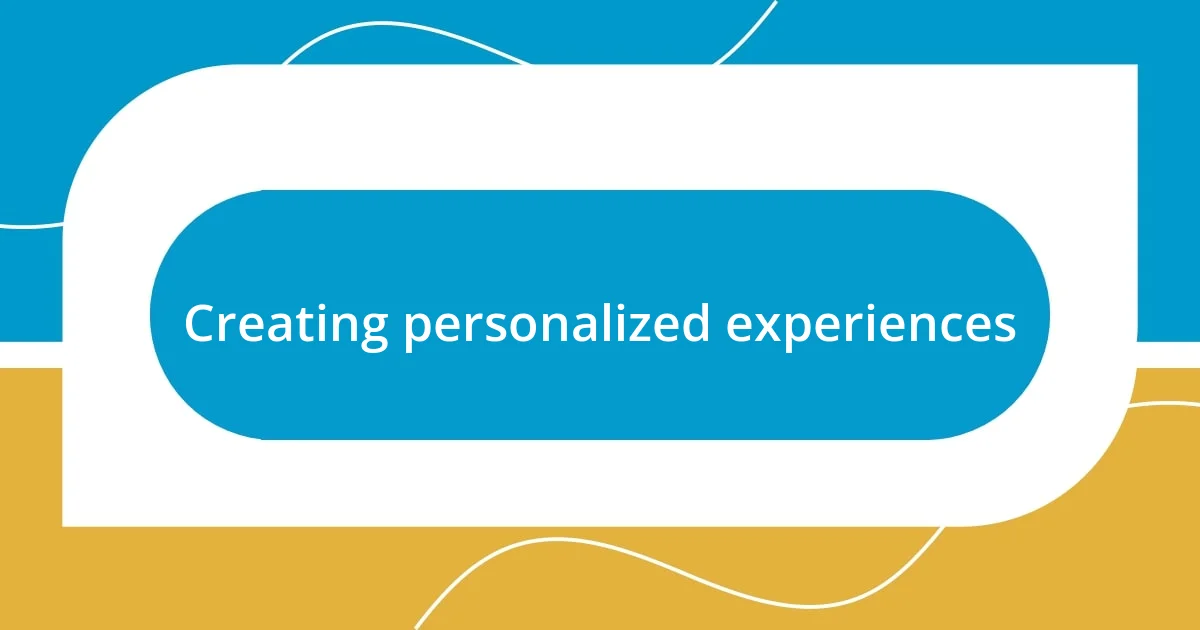
Creating personalized experiences
Creating personalized experiences is all about genuinely understanding your customers. I recall a time when I sent a handwritten thank-you note to a client who had made a significant purchase. When I received a call from her, she was visibly moved. “This makes me feel valued,” she said. That small gesture not only left a lasting impression but also laid the groundwork for a deeper relationship. Isn’t it amazing how a little personalization can transform a typical transaction into a meaningful interaction?
Another aspect I always consider is tailoring recommendations based on previous purchases. For example, after noticing a customer regularly bought eco-friendly products, I curated a list of similar items they might enjoy. When I reached out to share it, their excitement was palpable. “I didn’t know those existed! Thank you!” they exclaimed. This approach turned an ordinary shopping experience into a personalized journey, making them feel like I truly understood their values and preferences.
Lastly, recognizing milestones can further enhance personalized experiences. I have made it a point to celebrate my customer’s anniversaries or milestones with small gifts or messages. When one client celebrated a decade with us, I organized a surprise virtual party. The joy in their voice when they thanked me for the gesture was something I can still hear. These moments reinforce not just our business relationship but a sense of community and connection that I strive for. Isn’t it those small moments of recognition that really solidify long-lasting bonds?
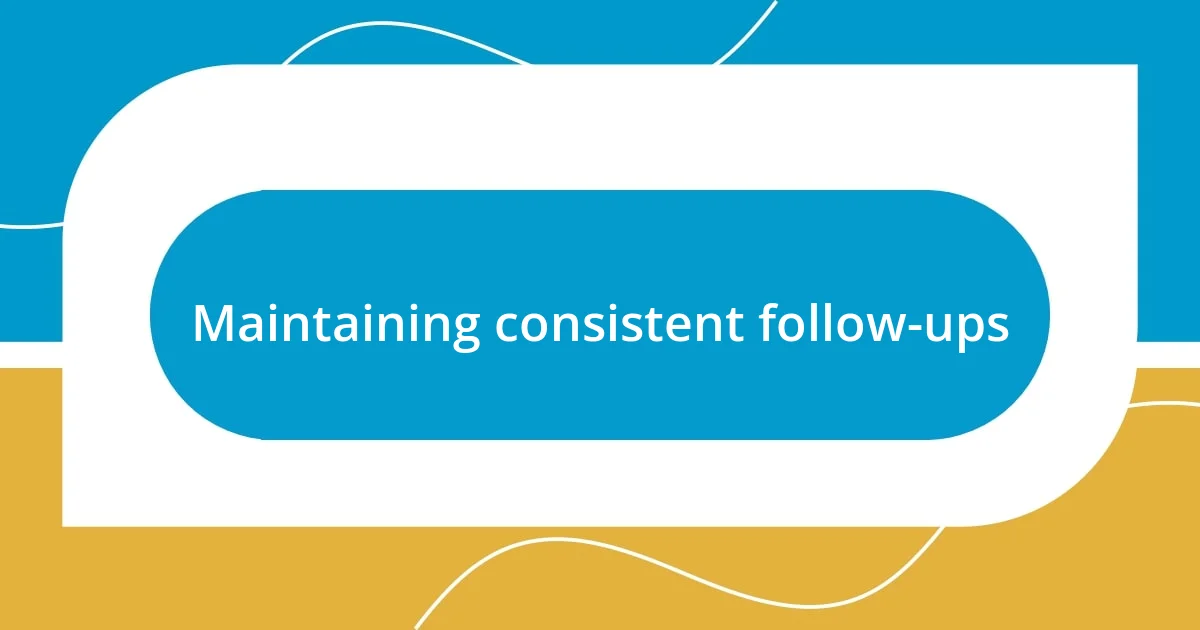
Maintaining consistent follow-ups
One of my core beliefs is that consistent follow-ups are pivotal in nurturing customer relationships. I remember once reaching out to a client a month after they made a significant purchase to see how they were enjoying the product. Their surprise at my call was evident, and they expressed how impressed they were that I cared enough to check in. This simple act not only reinforced their trust in my brand but also opened up a conversation about any other needs they might have.
In my experience, setting up a structured follow-up schedule makes a world of difference. For instance, I use reminders to check in with clients at different stages—after a sale, a few weeks later, and periodically thereafter. I recall a specific moment when a customer, who I had followed up with regularly, shared that they were considering other suppliers. However, my constant engagement made them rethink and ultimately stay loyal. They appreciated my efforts, and that speaks volumes about the power of persistent follow-ups.
Another critical aspect I’ve learned is that follow-ups shouldn’t feel robotic or forced. I strive to make them feel natural and personal. Once, after sending a newsletter, I followed up with a casual phone call to discuss a related article I thought they’d find interesting. The conversation flowed effortlessly, and they ended up sharing insights about their own experiences. Those moments of genuine connection reveal how important it is to maintain the human touch in follow-ups, which solidifies relationships and builds a sense of community around my brand. Have you ever felt a deeper connection with someone simply because they remembered a detail you discussed? That’s the magic of consistent follow-ups.
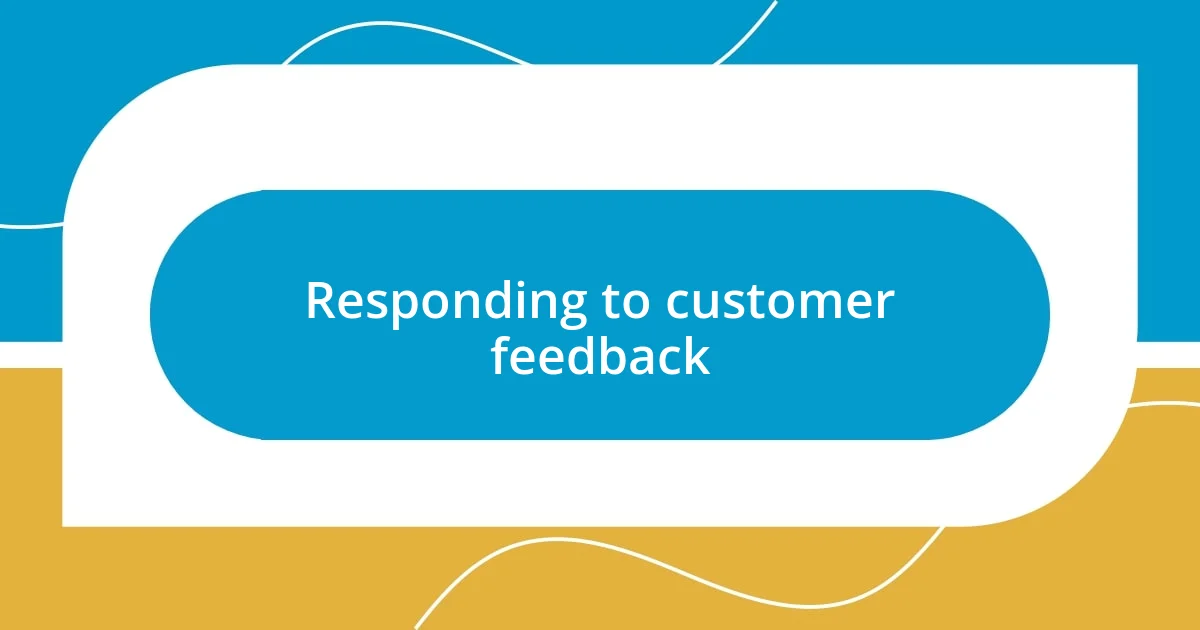
Responding to customer feedback
Gathering and responding to customer feedback is an essential part of building strong relationships. I remember a particularly enlightening moment when I received a less-than-favorable review about a product I had high hopes for. Initially, I felt defensive, but then I chose to reach out to that customer to understand their perspective more clearly. They appreciated my willingness to listen and ended up sharing some crucial details that helped me improve the product. Isn’t it incredible how a negative experience can morph into an opportunity for growth and connection?
Beyond just listening, the way I respond to feedback matters immensely. I always make it a point to thank customers for their insights, regardless of whether their experiences were positive or negative. For instance, after a customer pointed out a glitch on my website, I quickly acknowledged the issue and informed them when it was resolved. They expressed gratitude for my prompt response, saying it made them feel like part of the team. These little touches can turn a simple transaction into a collaborative relationship. Have you ever noticed how customers tend to become more engaged when they feel their voices contribute to your brand?
Moreover, I’ve discovered that sharing how feedback leads to tangible changes can truly elevate customer loyalty. Once, a customer suggested an addition to our product lineup, and I eagerly implemented it. When I later updated them about the launch, their excitement was palpable. They told me they felt invested in the process, as though they had a hand in creating something new. This is the essence of responding to feedback—transforming input into action not only fosters a sense of community but also strengthens the bond with your customers. How rewarding is it to see your customers become champions of your brand?
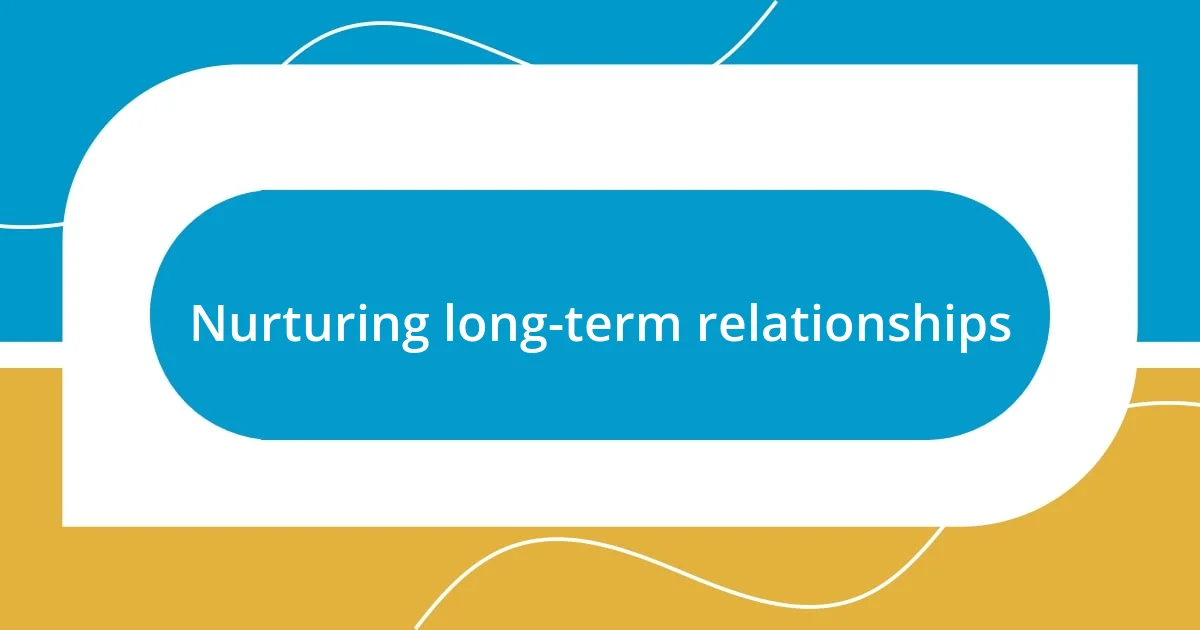
Nurturing long-term relationships
Nurturing long-term relationships requires genuine effort and authenticity. I’ve learned that being present in my customers’ journey matters immensely. For example, I once reached out to a client on their anniversary with our service, simply to congratulate them and express my appreciation for their loyalty. It turned out to be a wonderful conversation; they shared how my team had positively impacted their business over the years. Moments like these remind me just how powerful personal touches can be in forging lasting connections.
Building on that, I prioritize creating opportunities for customers to feel valued beyond transactions. I recall hosting a small workshop for a select group of clients, not only to share industry insights but also to foster dialogue among themselves. The energy was palpable as they exchanged ideas and experiences. Afterward, one attendee expressed how they hadn’t just learned something new, but they felt a part of a community. Isn’t it fascinating how we can deepen customer relationships by facilitating connections among them?
Moreover, I believe in the importance of celebrating milestones with clients. I once sent a handwritten note to a customer commemorating their business’s 10th anniversary with our brand. They were touched that I took the time to recognize their achievement. This simple gesture speaks volumes about commitment to nurturing relationships. Do you ever experience a sense of joy or warmth when someone notices significant moments in your life? That’s the magic of nurturing—transforming transactions into meaningful connections.












